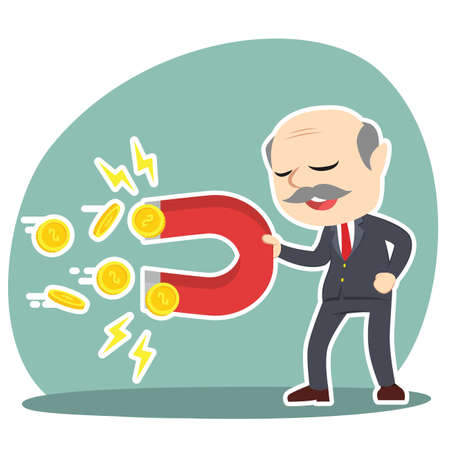1. Understanding Founder Burnout in the American Startup Landscape
The Unique Pressures Facing American Founders
Starting a business in the U.S. is an exciting journey, but it comes with its own set of challenges that can wear down even the most passionate entrepreneurs. The American startup scene is fast-paced and competitive, often glorifying hustle culture and long hours. Founders feel intense pressure to innovate quickly, scale rapidly, and meet high expectations from investors, customers, and their own teams.
Cultural Factors That Fuel Burnout
American founders often operate in a “work hard, play hard” environment. There’s a strong belief that success requires sacrificing personal time and well-being for the sake of the business. This mindset can make it difficult for founders to set boundaries or ask for help, increasing the risk of burnout.
Main Contributors to Burnout Among American Founders
| Factor | How It Contributes to Burnout |
|---|---|
| Hustle Culture | Encourages working excessive hours, leading to physical and mental exhaustion. |
| Financial Pressure | Constant worry about funding and revenue adds stress and anxiety. |
| Fear of Failure | High expectations can make setbacks feel catastrophic, causing emotional strain. |
| Lack of Work-Life Balance | Difficulty disconnecting from work reduces time for rest and relationships. |
| Cultural Stigma Around Asking for Help | Founders may avoid seeking support due to fear of appearing weak or uncommitted. |
The Impact on Mental Health and Business Success
These pressures not only affect a founder’s well-being but can also impact decision-making, creativity, and team morale. Recognizing these unique factors is the first step toward building healthier habits that support long-term success in the American startup world.
2. Setting Boundaries: Work-Life Balance Strategies that Actually Work
Why Boundaries Matter for American Founders
Startup life in the U.S. is fast, competitive, and often all-consuming. Without clear boundaries, it’s easy to let work bleed into every hour of your day, leading to burnout and hurting both your business and personal life. The good news? With some intentional strategies, you can protect your well-being while still building something amazing.
Actionable Tips to Separate Work from Personal Life
1. Designate “No-Work” Zones
Create physical spaces at home or in your office where work is simply not allowed. For example, keep laptops and phones out of your bedroom or dining area. This small change helps signal to your brain when it’s time to relax versus when it’s time to hustle.
2. Use Technology Wisely
Set up clear work hours on your digital calendars and use tools like Do Not Disturb or Focus Mode after hours. If possible, separate your personal and work devices to avoid the temptation of checking emails late at night.
3. Communicate Your Boundaries
Let your team, co-founders, and even investors know your availability. Post your “office hours” in Slack or email signatures so people know when you’re reachable—and when you’re not.
| Strategy | How To Implement | Why It Works |
|---|---|---|
| No-Work Zones | Keep work devices out of bedrooms and dining areas. | Helps mentally separate work from downtime. |
| Scheduled Breaks | Add breaks into your calendar—treat them like meetings. | Makes rest a non-negotiable part of your day. |
| “Office Hours” Communication | Share your working times with team/investors. | Sets expectations for response times and availability. |
| Email/Notification Management | Turn off push notifications outside work hours. | Reduces stress and temptation to overwork. |
| Weekend Rules | No meetings or emails after Friday evening unless urgent. | Keeps weekends for personal recharge and family time. |
4. Schedule Downtime Like You Schedule Meetings
Treat self-care, exercise, and social time as seriously as investor calls or product launches. Add them to your calendar so they don’t get pushed aside by last-minute work demands.
5. Learn to Say “No” Without Guilt
You can’t do everything—and that’s okay! Politely decline non-essential meetings or projects that stretch you too thin. Saying no now protects your energy for what matters most in the long run.
A Few Real-World Examples from U.S. Startup Founders
- Austin-based SaaS founder: Turns off Slack notifications after 7pm and has dinner with family every night, no exceptions.
- Bay Area tech CEO: Blocks out Friday afternoons for “thinking time”—no meetings allowed, just space for creative strategy work or rest.
- Nashville e-commerce entrepreneur: Keeps weekends completely email-free; if something’s urgent, the team knows to text instead.
The Bottom Line on Boundaries
Sustainable success isn’t about working nonstop—it’s about making smart choices that help you stay energized and focused over the long haul. By setting intentional boundaries, you’ll be better equipped to thrive as an American founder without burning out along the way.

3. Prioritizing Like a Pro: Effective Time Management Tools and Techniques
When you’re building a startup in America, it can feel like there’s never enough time in the day. But working endless hours isn’t the answer—smarter time management is. Let’s look at some practical tools and techniques that help founders stay focused, get more done, and avoid burning out.
Digital Calendars: Your Personal Command Center
Using a digital calendar (like Google Calendar or Outlook) is a game-changer. Schedule everything: meetings, deep work blocks, even breaks. Color-code your activities so you can see at a glance where your time goes. Sync your calendar across devices so you always know what’s next, whether you’re at your desk or on the go.
Task Prioritization Frameworks
Trying to do everything at once leads to chaos. Use prioritization frameworks to work smarter:
| Framework | How It Works | Best For |
|---|---|---|
| Eisenhower Matrix | Sort tasks by urgency and importance into four quadrants. | Deciding what truly needs your attention today. |
| ABC Method | Label tasks A (most important), B (important), or C (nice to do). | Quickly ranking daily to-do lists. |
| Time Blocking | Block specific times for focused work, emails, or meetings. | Avoiding distractions and multitasking. |
| Pomodoro Technique | Work in short sprints (25 minutes), then take a break. | Boosting focus and energy through the day. |
Project Management Tools for Founders
If your team is growing, managing projects with tools like Trello, Asana, or Notion keeps everyone aligned. Set deadlines, assign tasks, and track progress—all in one place. This helps keep projects moving without the stress of endless email chains or missed details.
Trello Example Board Structure:
| List Name | Description |
|---|---|
| To Do | All upcoming tasks waiting to be started. |
| Doing | Tasks currently in progress. |
| Review | Tasks ready for feedback or approval. |
| Done | Completed tasks—celebrate these! |
Automate What You Can
Avoid wasting precious brainpower on repetitive tasks. Use automation tools like Zapier or IFTTT to connect your apps and automate routine processes (like updating spreadsheets or sending reminder emails). This frees up time for high-value work only you can do as a founder.
The Power of Saying “No” (or “Not Now”)
Piling on too many commitments leads straight to burnout. Use your prioritization tools to decide what fits with your goals—and don’t be afraid to say “no” or “not now” when something doesn’t align. Protecting your schedule protects both your well-being and your business in the long run.
4. Leveraging Support Systems: Building Your Founder Network
Running a startup in the U.S. can feel like a lonely road, but it doesn’t have to be. One of the best ways to prevent burnout and manage your time more sustainably is by connecting with others who understand what you’re going through. Let’s explore how peer support, mentorship, and community can make all the difference for American founders.
Why Founders Need a Strong Support Network
No one builds a business alone. Even in the fiercely independent culture of American entrepreneurship, having a network can help you handle stress, make better decisions, and keep your energy up. Here’s why leaning on others matters:
| Support Type | What It Offers | How to Access |
|---|---|---|
| Peer Support | Emotional encouragement, advice from those facing similar challenges | Founder meetups, online forums (like Indie Hackers or Y Combinator’s community) |
| Mentorship | Guidance from experienced entrepreneurs, feedback on business decisions | Local accelerator programs, SCORE mentors, LinkedIn outreach |
| Community | A sense of belonging, opportunities for networking and collaboration | Coworking spaces, Chamber of Commerce events, industry associations |
The Power of Peer Support
Talking to fellow founders who “get it” can relieve stress and provide new perspectives. In the U.S., many entrepreneurs join mastermind groups or Slack channels just to share wins, losses, and lessons learned. It’s not just about venting—real solutions often come from these peer interactions.
The Value of Mentorship in America’s Startup Scene
A good mentor is worth their weight in gold. They’ve walked the path before and can help you avoid common pitfalls. Many American cities have local programs where experienced founders volunteer as mentors. Don’t hesitate to reach out—it’s part of the entrepreneurial spirit here to give back.
Finding Community: You’re Not Alone
The U.S. has a vibrant ecosystem for startups, from coworking spaces in big cities to small-town business clubs. These communities provide practical resources like workshops and funding tips—and sometimes just a friendly face when things get tough.
Quick Tips for Building Your Founder Network
- Attend local startup events—even virtual ones count!
- Join online groups specific to your industry or city
- Ask for introductions from friends or colleagues who know other founders
- Consider giving back by mentoring someone newer than you—the support goes both ways
Your Network Is Your Safety Net
You don’t have to do it all alone. By tapping into peer support, mentorship, and community resources available across America, you’ll find sustainable ways to manage your time and avoid burnout—together with others who are on the same journey.
5. Making Sustainability a Habit: Long-Term Mindset Shifts
If you want to avoid burnout as an American founder, it’s not just about making short-term fixes—it’s about building habits that last. Developing sustainable routines and the right mental frameworks can make all the difference. Here’s how you can set yourself up for long-term wellness and keep burnout at bay.
Embrace Consistent Routines
Sticking to a routine might sound boring, but it’s actually one of the best ways to protect your energy and mental health. When your days have structure, you’re less likely to feel overwhelmed by surprises or constantly in “catch-up” mode. Start simple:
| Routine Element | What It Looks Like | Why It Matters |
|---|---|---|
| Morning Rituals | Wake up at the same time, light exercise, healthy breakfast | Sets the tone for a productive day |
| Work Blocks | Dedicated times for deep work, meetings, and breaks | Keeps you focused and prevents fatigue |
| Evening Wind-Down | No screens after 9pm, reading, family time | Helps your mind recover and prepares you for restful sleep |
Cultivate a Growth Mindset
It’s easy to fall into the trap of thinking you need to do everything perfectly or never make mistakes. Instead, try adopting a growth mindset—viewing challenges as opportunities to learn rather than threats to your success. This shift helps reduce stress and allows you to approach problems with curiosity instead of fear.
Tips for Building a Growth Mindset:
- Acknowledge small wins every week—even if they seem minor.
- Treat setbacks as lessons, not failures.
- Surround yourself with supportive peers who encourage learning.
Create Boundaries That Stick
Saying “no” is a skill every founder needs. Set clear boundaries between work and personal life, even if you’re passionate about your company. Use tools like calendar blocks and auto-responders to reinforce these limits.
Sample Boundary-Setting Phrases:
- “I’m unavailable after 6pm—let’s catch up tomorrow.”
- “I’ll review this during my next focus block.”
- “Thanks for reaching out! I’ll respond within 24 hours.”
Check In With Yourself Regularly
Bake self-assessment into your weekly routine. Ask yourself: Am I feeling energized or exhausted? What went well this week? Where did I struggle? Regular check-ins help you catch early signs of burnout before they spiral out of control.


